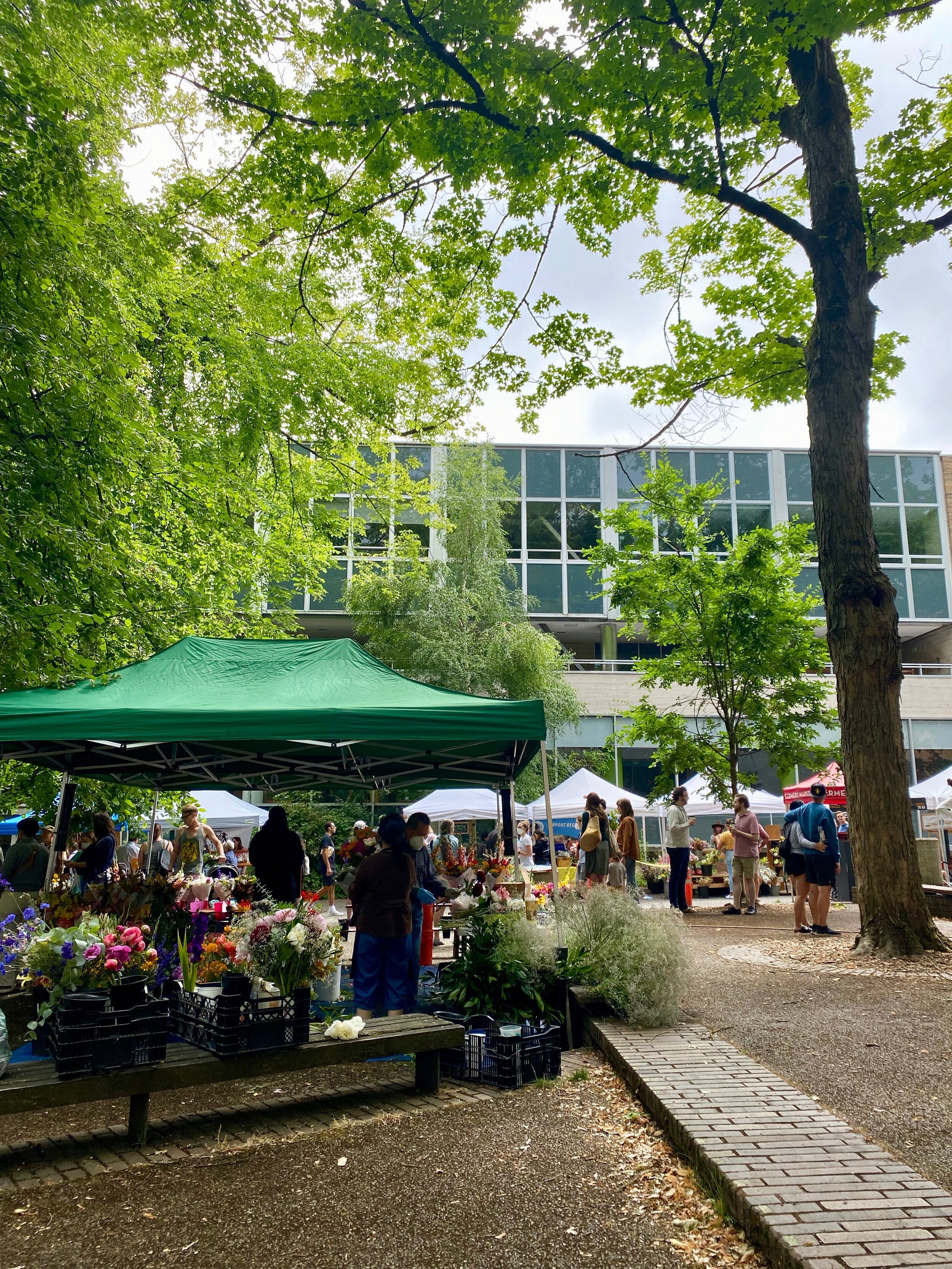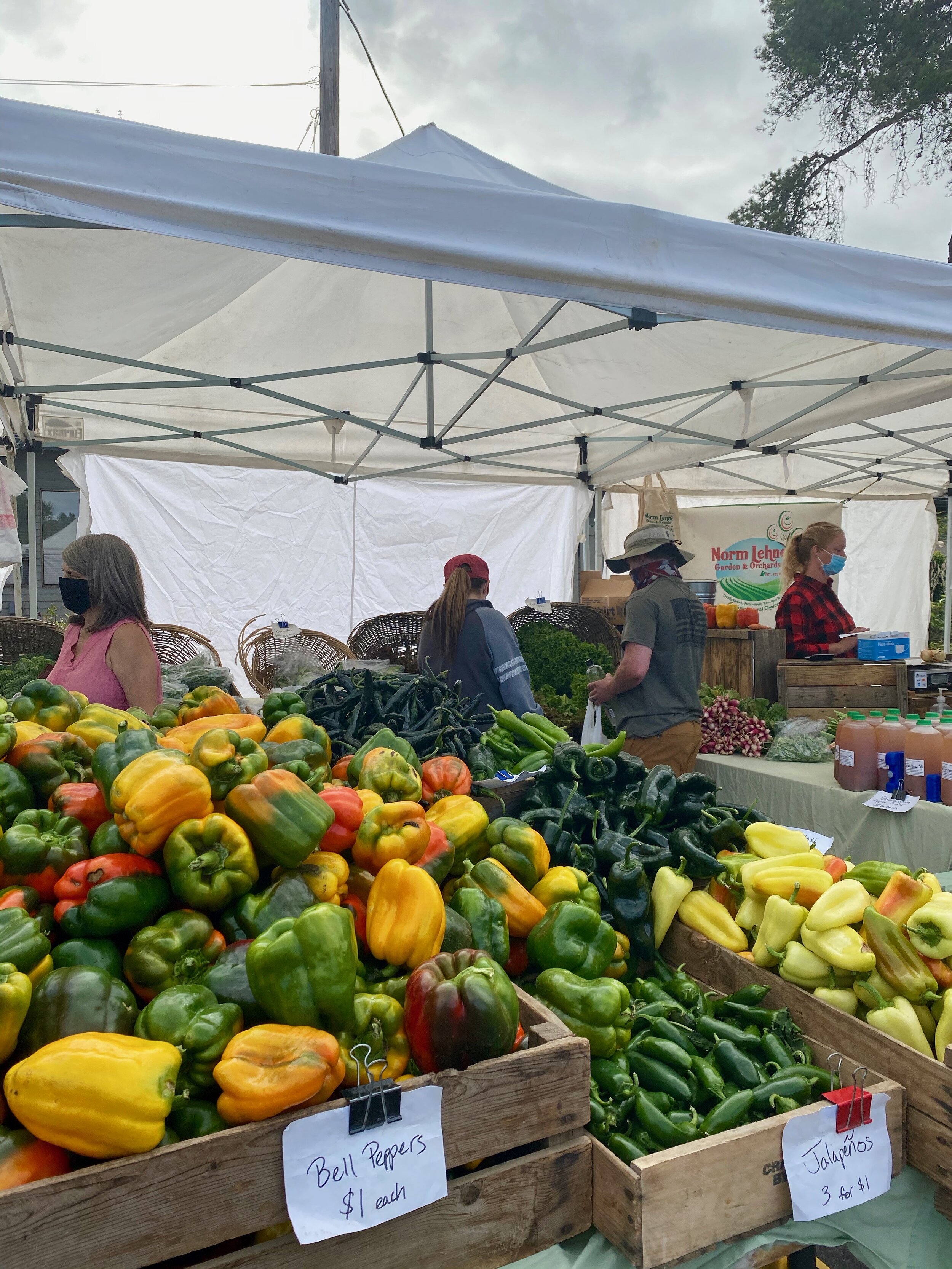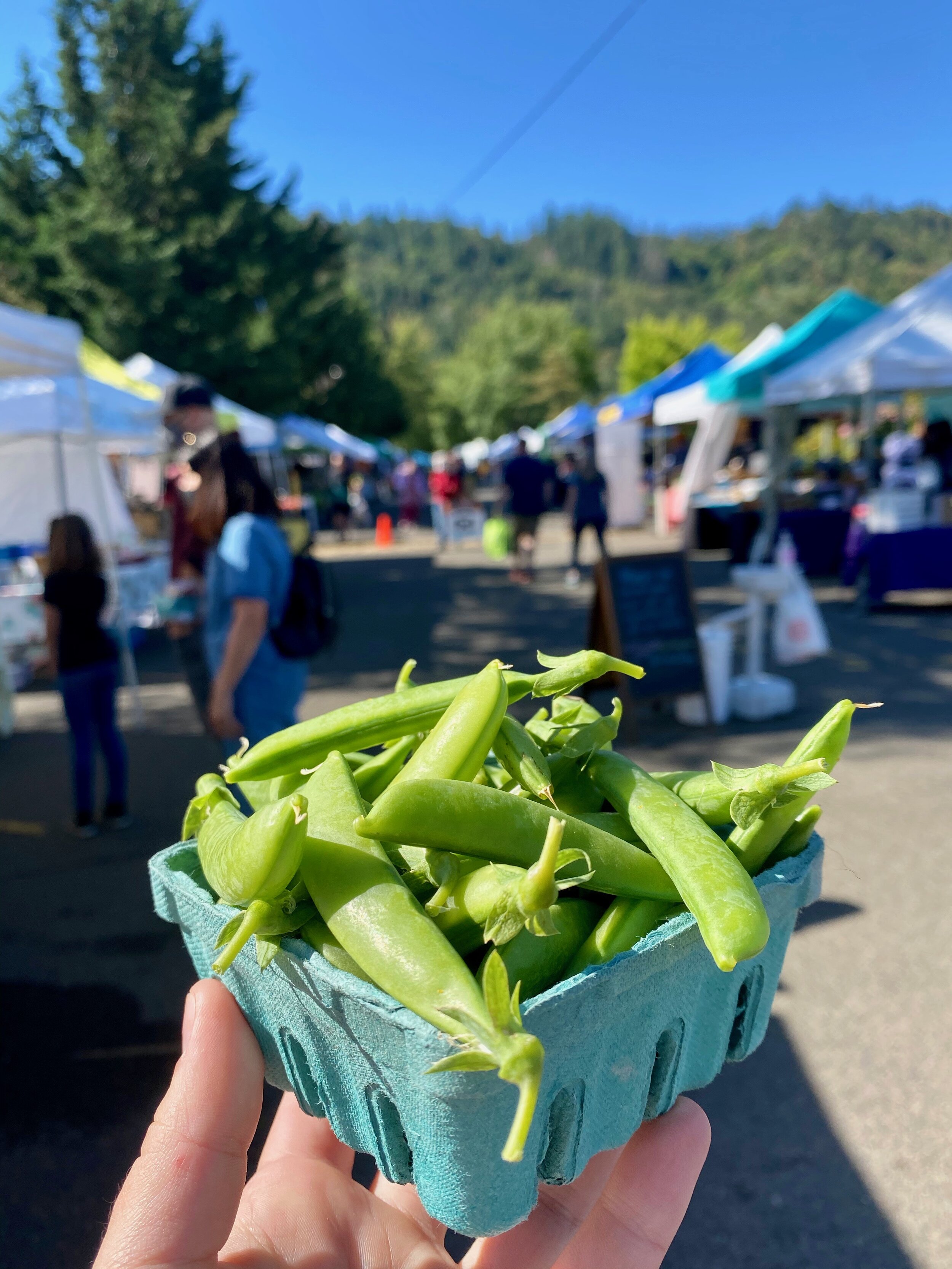Farmers Markets and Local Food Growth
This week is National Farmers Market Week, which means that professionally I’m extremely stressed and a little delirious (I have the honor of working for both the national Farmers Market Coalition and the Oregon Farmers Markets Association right now), but it also means that I get the time to really reflect on the past year in the field of farmers markets. Every year, during the first week of August, I get to think about what has happened in the past year, and thoughtfully consider — why the heck do we care so much about farmers markets? And beyond that, where is this field going?
While I could go on for days about the merits of farmers markets, I would assume that most Grounded Grub readers are pretty familiar with what makes farmers markets great: local food, local economies, community connection that leads to resilience and a sense of place, etc… So today I’m diving into, what does the future of farmers markets look like?
At the beginning of the pandemic there was a surge of interest in local food. CSAs sold out at record numbers and local food delivery businesses saw orders skyocket. The appeal of fewer hands touching your food in addition to the failure of major grocery supply chains made local food systems more attractive than ever. Many farmers markets were able to stay open with adaptations and restrictions, and those who did usually saw increased sales for vendors. Many created drive-thru models or online ordering systems — something they had thought about for a while but never had the push to actually do. According to data collected by the Local Food Systems Response to COVID — a collaborative project between 17 national local food system organizations funded by the USDA — there was a 3% increase in shoppers at farmers markets nationwide in 2020. While 3% might seem lame at first glance (in all honesty that was my first thought), that 3% represents 36 million shoppers, which is a pretty big group of people!
“Okay,” you say, “but that was just during the pandemic, now that we’re coming out, how are things going to change?” Valid point there, friend. What does the future hold for these farmers market shoppers? Are they fair-weather market-goers who only went because open-air is less likely to transmit COVID? Some of them, yes, but the data shows that at least 30% of those that went to a farmers market during the pandemic for the first time will continue to be consistent market shoppers after the pandemic. This is great news for market managers and vendors who have worked tirelessly to adapt to changing COVID regulations: not only did they retain customers through their hard work, they gained some too!
Farmers markets still have their issues. While farmers get to take home a larger percent of each dollar spent on produce, they also have to spend a lot of time doing more than just growing crops. They have to be their own marketing department, their own salesperson, and the hours spent at the market every week are often hours away from farming and their family. They also have historically been extremely white spaces and not welcoming to customers or vendors of color. There are a lot of people working to change this — notably BIPOC-run markets like the Come Thru in Portland and the Black Farmers Market in Durham — but it would be irresponsible of me to tout the growth in farmers markets without recognizing that they aren’t all sparkly and perfect all the time.
When it comes to local food, I always like to quote my friend Kiara Kashuba with an insight that really shifted the way I think: “it’s not about competition, it’s about expanding the slice of the pie.” While we could look at farm-direct or local food businesses in competition with one another, I’ve found that most community food systems businesses and organizations are much more about cooperation than competition. Rather than viewing the local food customer base as fixed, if we can view it as something that can grow, and continue to invite people to the figurative table, then the possibilities for making change and building local resilience become boundless. We know that farmers who sell at farmers markets feel like they are able to make more sustainable choices with their growing practices. We know that farmers markets foster community connection and resilience. I believe that there will always be a place for big supermarkets and international food systems (what would I do without my morning coffee?!), but I do think that the more people there are that make buying directly from a farmer part of their grocery routine, the better off our communities and environment will be.
While the predicted growth of farmers market shoppers is still relatively small, what I find most exciting is that the number is still going up, not down. Throughout the pandemic the talk around local, community based food systems, and nearly everything else of that matter, has been all doom-and-gloom, but it’s exciting to me to see some kind of silver lining in how the pandemic has shifted our thinking. You might be sick of hearing about the pandemic and the food system, but here are few things that have truly rocked our international, national, and regional food systems in such a dramatic way. The pandemic has forced us all to take many steps back and truly consider what is sustainable, what we value, and how we want our food system to look.
Happy National Farmers Market Week, y’all. Go shop at your local market and support a farmer!



